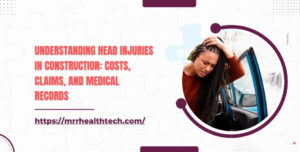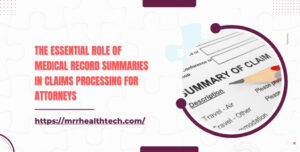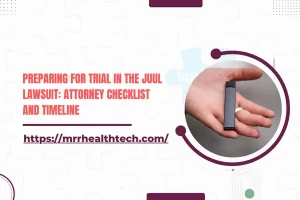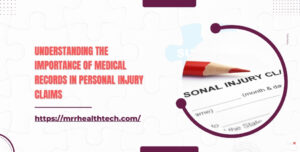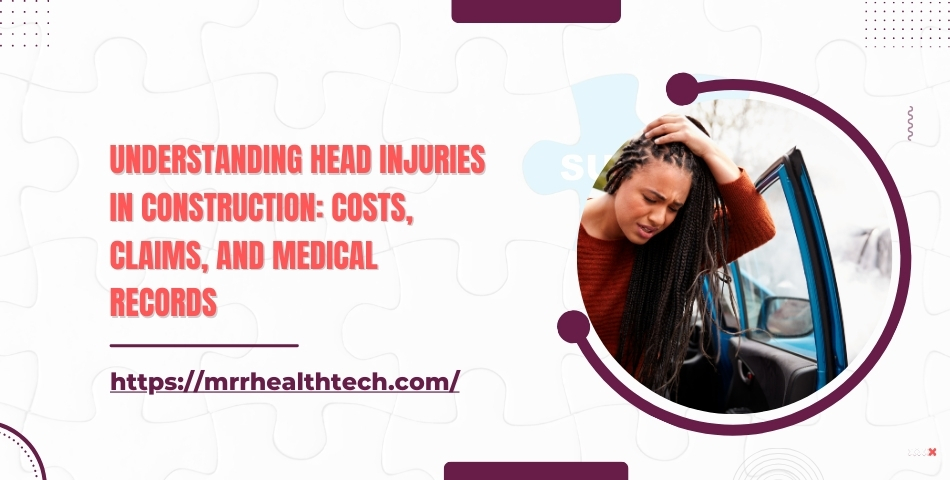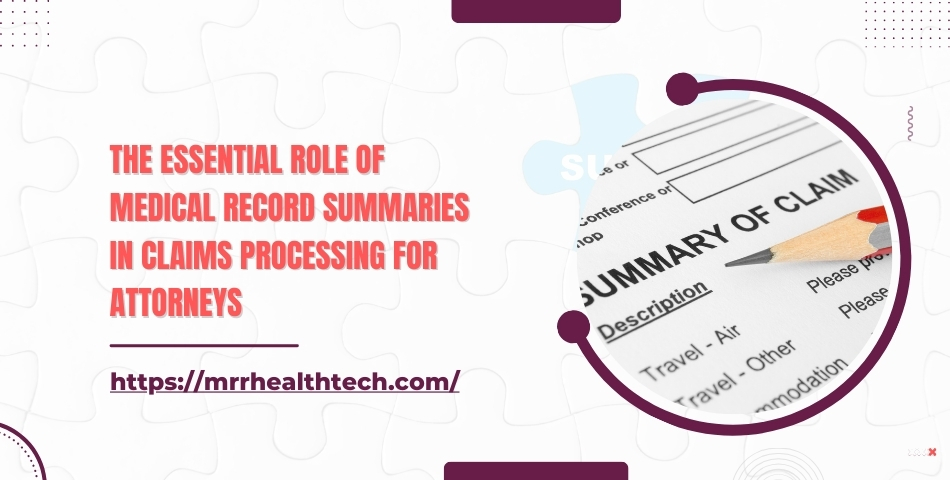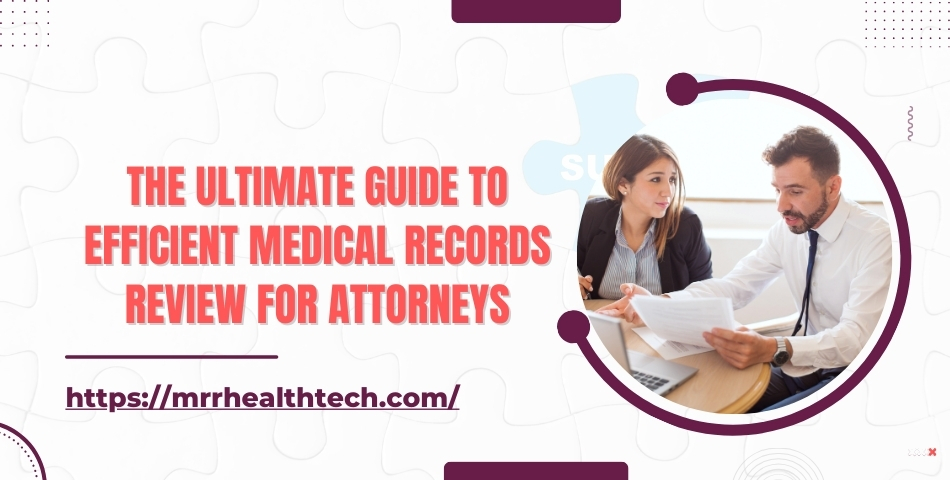
Introduction
In this practice environment, especially in personal injury and mass torts, the review and compilations of the medical records are quite essential. The legal practitioners work meticulously at drafting substantiating medical documents that present a solid causation for the claimant. This article describes a new practice, which was specifically developed for practitioners in the United States aiming to improve the quality standards of medical records review. The purpose of the medical records, the recommended practices in their ordering, the most frequently occurring problems, and the methods of improving your practice through the use of our services shall be presented.
Understanding the Importance of Medical Records in Legal Cases
What Are Medical Records?
These are detailed and concise documents that make up the medical history, the diagnosis, the treatment and the outcome of a patient. Such records bear key importance as evidence in the court proceedings especially for claims touching on injury, professional negligence and mass tort claims.
Best Practices for Organizing Medical Records
1. Implement a Standardized Filing System
Importance of Standardization
A standardized filing system ensures that all medical records are organized consistently, making retrieval easier and faster. Consider the following methods:
- Chronological Order: Organize records by date to create a clear timeline of treatment.
- Categorical Organization: Group records by type (e.g., diagnostic tests, treatment notes, discharge summaries).
2. Utilize Technology for Record Management
Digital Solutions
Investing in digital record management systems can significantly enhance the efficiency of medical records review. Key features to look for include:
- Filing on the Cloud: Enables safe databases that are easy to access and share.
- OCR Systems: A technology that enables scanned documents to be edited or searched.
3. Regularly Update and Audit Records
Importance of Maintenance
By performing periodic audits on medical files, one is certain that the information contained within is updated and accurate. This prevents cases of missing files and filing conflicts that may have an impact on court cases.
4. Train Staff on Best Practices
Staff Training
Already teaching a reckon within the elect of the medically induced writs on laws entailed within medical records is a good concept of increasing efficiency. These trainings include team building exercises and refresher courses.
Common Challenges in Medical Records Review
1. Volume of Records
The Challenge
In most mass tort litigations, attorneys have to contend with a plethora of medical records leading to untimely case preparation.
Solutions
- Outsource Medical Records Review: Work with a medical records review firm to take the strain off the legal team.
- Review Plans firming Up: The review for the most relevant records is the foremost goal of this process.
2. Inconsistent Documentation
The Challenge
When medical information is recorded differently the review process can become very cumbersome. Use of conflicting terms and even formats can create a lot of problems.
Solutions
- Bring Consistency in Terms: Coordinate with the concerned medical personnel and ensure that there is consistent usage of medical terms in the records.
- Formulate Guidelines: Prepare guidelines or templates for the typical coverage and ensure that there is consistency in coverage across the different charts.
3. Time Constraints
The Challenge
When the timelines are strict, the legal teams are often rushed during the review process and negligence is a possibility.
Solutions
- Establish Effective Processes: Cut down on unnecessary delays during the processes of record retrieval and examination by defining, streamlining and clearly communicating appropriate processes.
- Embrace Software: Use programs such as spread sheets and databases to cut down on poor quality of records and repetitive tasks.
How Our Medical Records Review Services Can Help Attorneys
Tailored Solutions for Legal Professionals
Our medical records review services are designed specifically for attorneys, providing comprehensive support throughout the legal process. Here’s how we can assist:
- Scoop up Elements Stone By Stone: We take time and go through each of the medical history files and search for information that can support your case.
- Fast Service: All the reviewed records are handed over to you when we know that you need them so that you can beat crucial timeframes.
- Expertise in Medical Terminology: Our trained professionals do know how to understand medical terminologies and this enhances the proper understanding of the records.
Case Studies
Case Study 1: Personal Injury Claim
Case Background
A client who sustained injuries in a road traffic accident due to a careless driver was represented by an attorney. Good amount of medical evidence was needed to make the case.
Challenges
The attorney had difficulties increasing the volume of medical records requested from various healthcare providers, which further complicated the task of case preparation and increased time spent.
Solutions
The attorney managed to make the handling of the tasks more efficient by delegating the work on the review of medical records to our company. So we developed a very structured way how to collect, evaluate and provide a brief of the cases ensuring that coverage of the cases is appropriately done.
Compensation
The result of the case was a settlement that was most favorable to the client as I was able to support the settlement with a medical case that was well prepared in terms of the timing of the review of records and the sources of the information that linked the accident and the injuries to the patient.
Case Study 2: Mass Tort Litigation
Case Background
A certain class of the plaintiffs took a mass tort action against a drug manufacturer as a result of the side effects of a certain drug. The lawyers had to collect and analyze thousands of medical records to support their case.
Challenges
There was a lot of paper work and records, and at the same time there was no standard of doing the documentation. Vast amounts of data collected caused disorganization and only hindered the legal team even more.
Solutions
Discrepancies in information due to lacks in documentation have been nip-picking in legal practices but with the use of new demanding technology alongside the hiring of professionals keeps my hopes high for my solvability of medical records ahead. Our team devised more trustworthy timelines for medical histories so the case could be presented in a satisfactory manner.
Compensation
All the necessary documents worked wonders and helped in receiving a lucrative settlement at the end which was all made possible due to the clear Ties established in the review of documents linking the medications and the releasable diseases among the class reinstated.
Conclusion
The best practices are recommended for personal injury cases as well as mass tort cases as this would enhance the quality of their case by efficient handling and organization of critical medical records. Encapsulating manuscripts is a cautious demand workers must be ready to face as this could lead to professionalism among the attorneys, and overall better outcomes in the long run. Due to the strenuous and tireless work ethics there is no doubt my clients would be content with their winnings at the end of the day.


